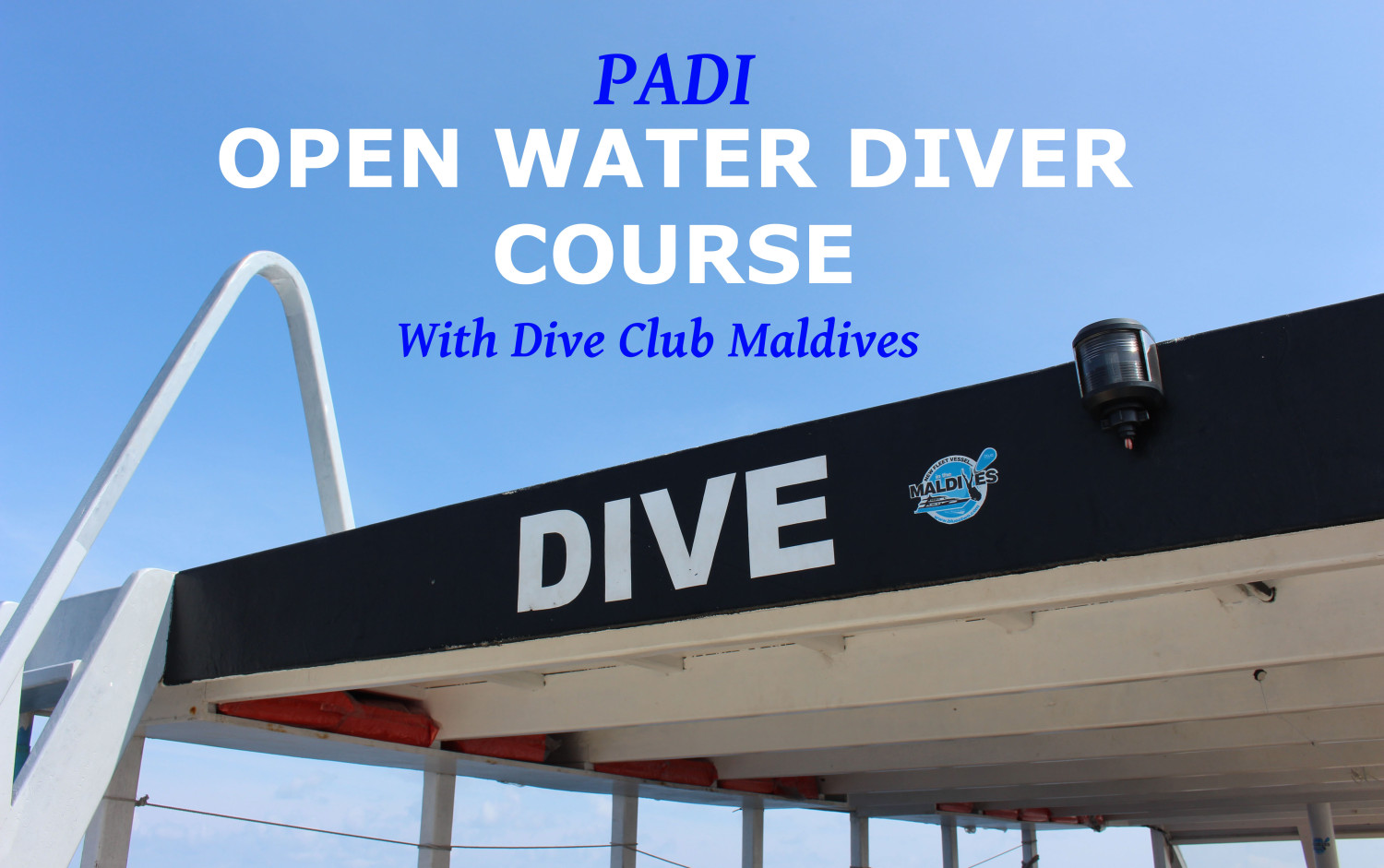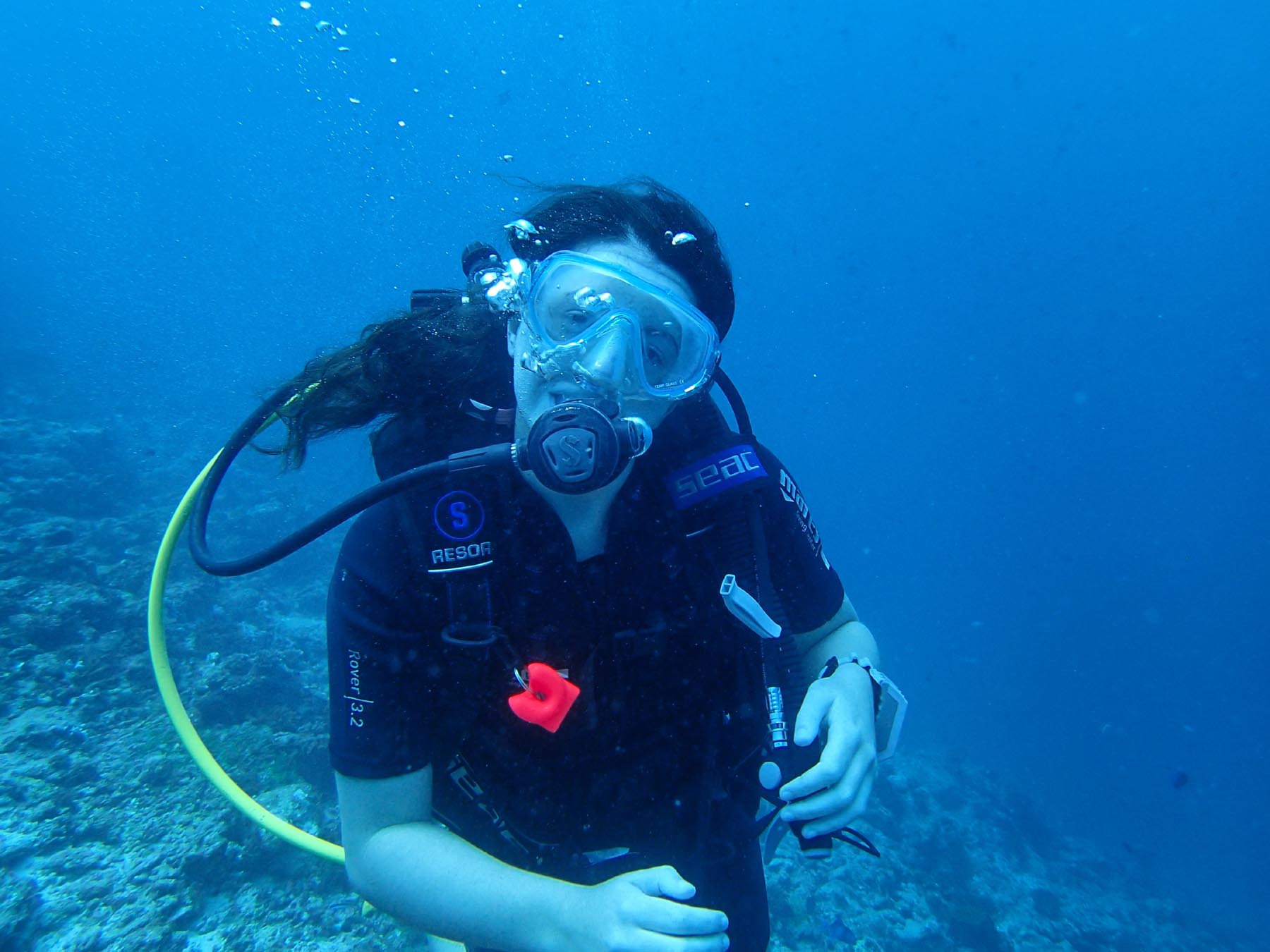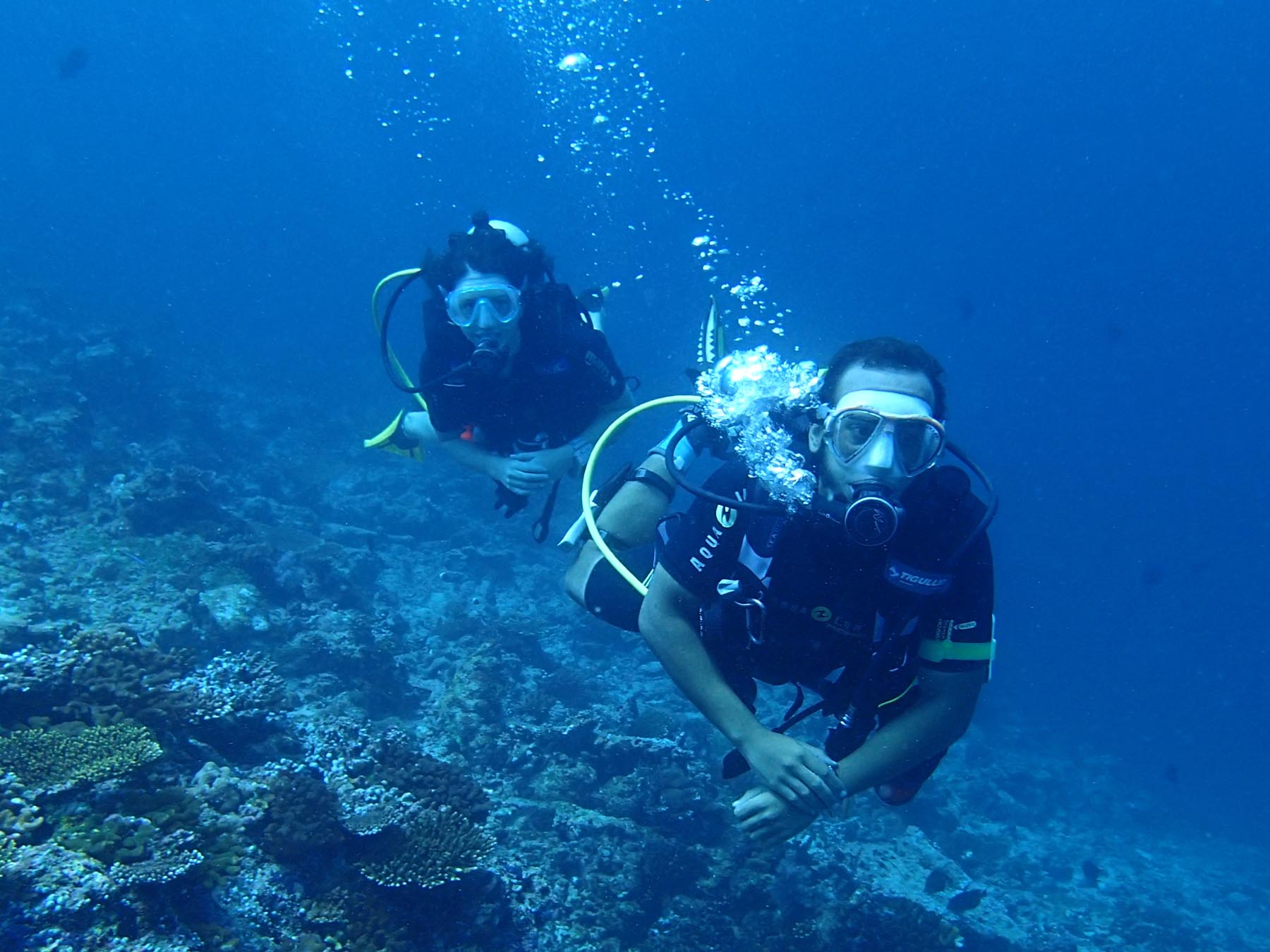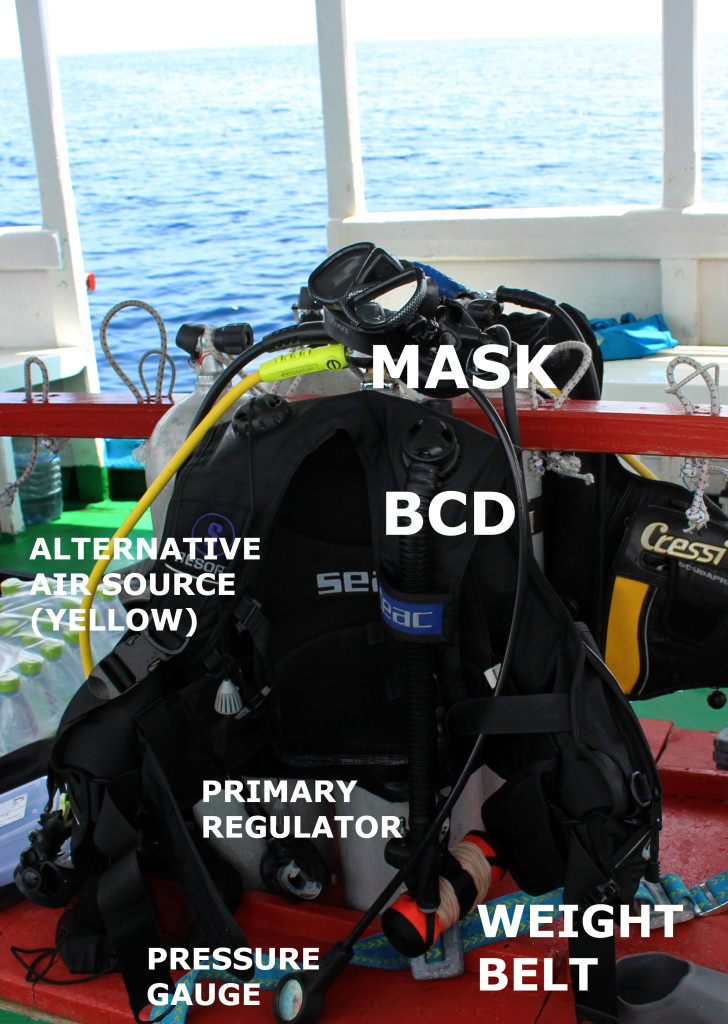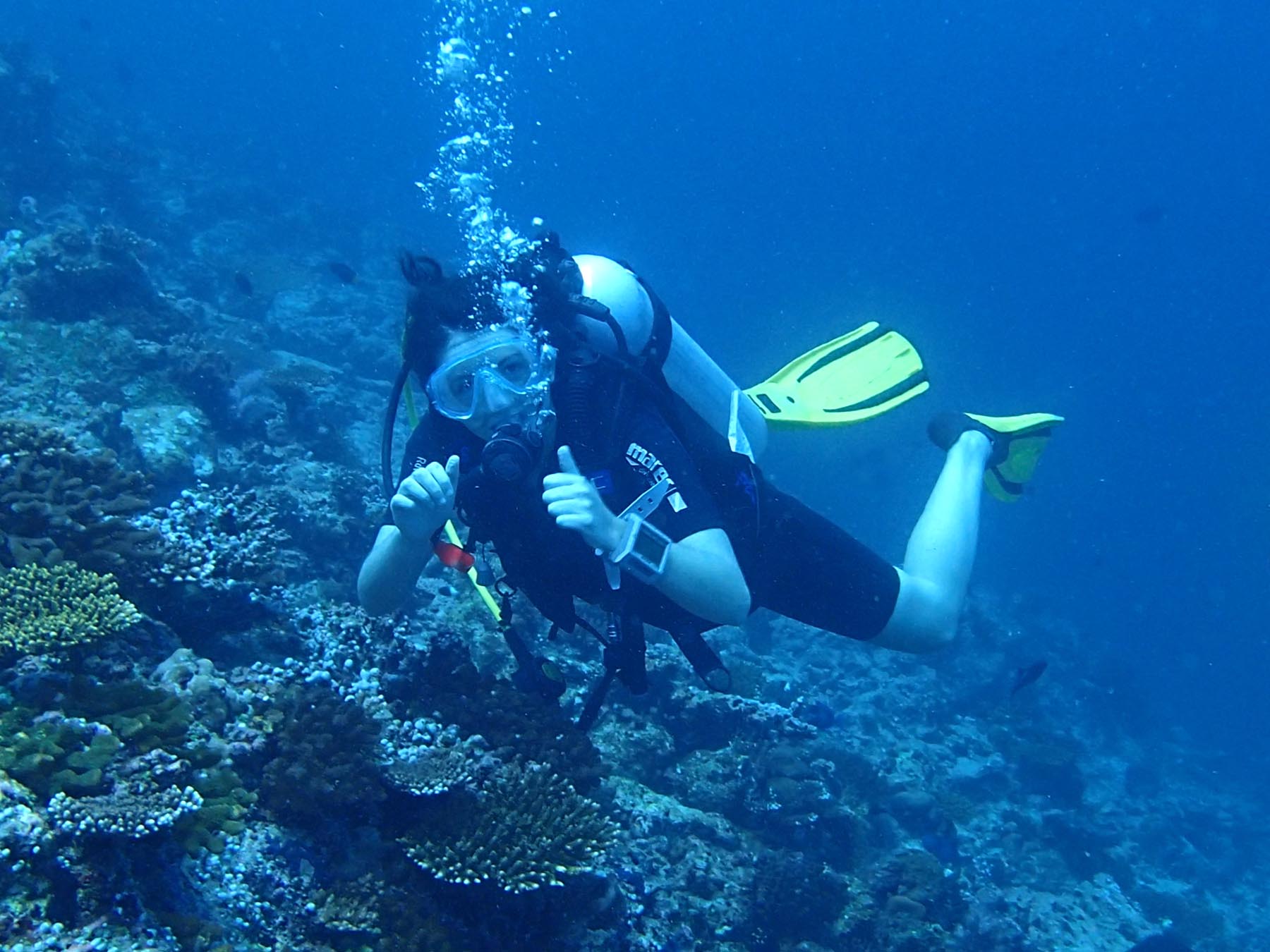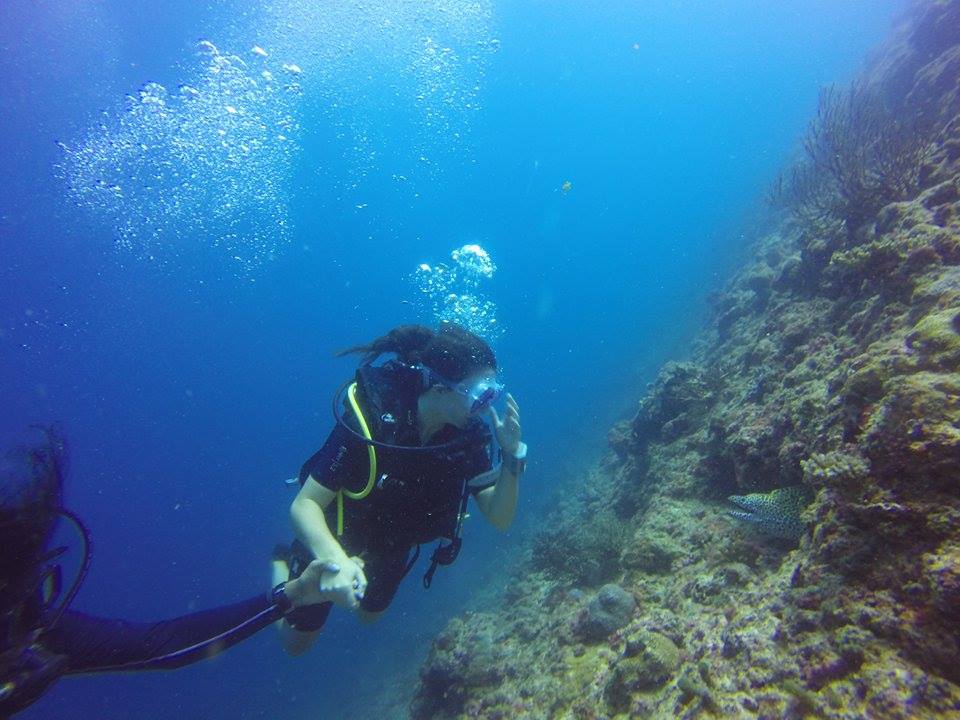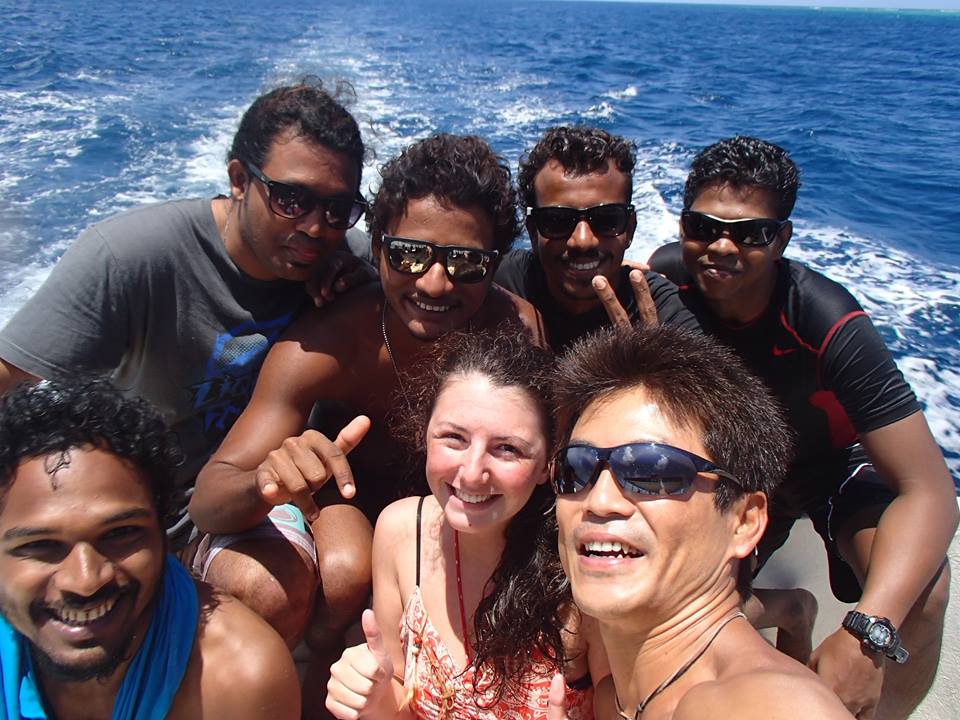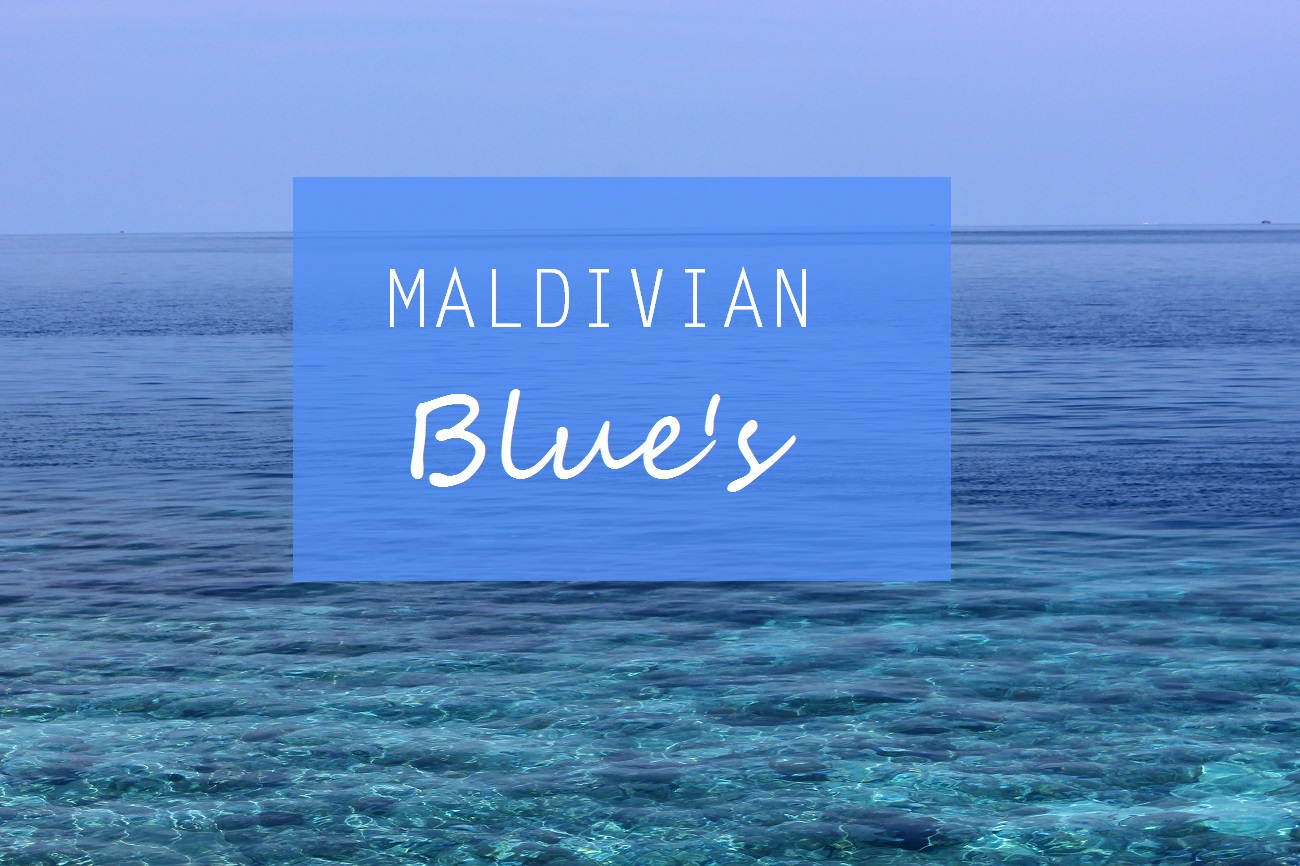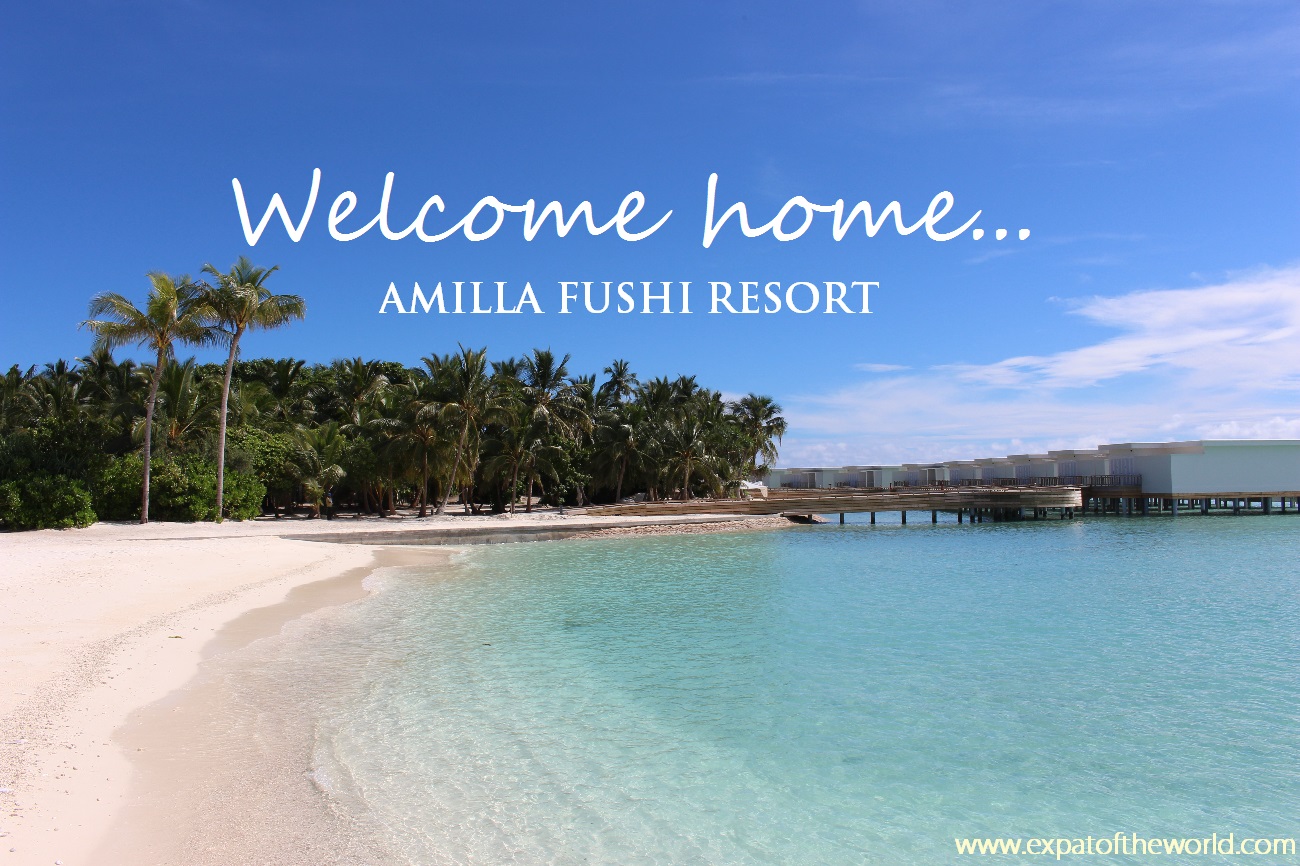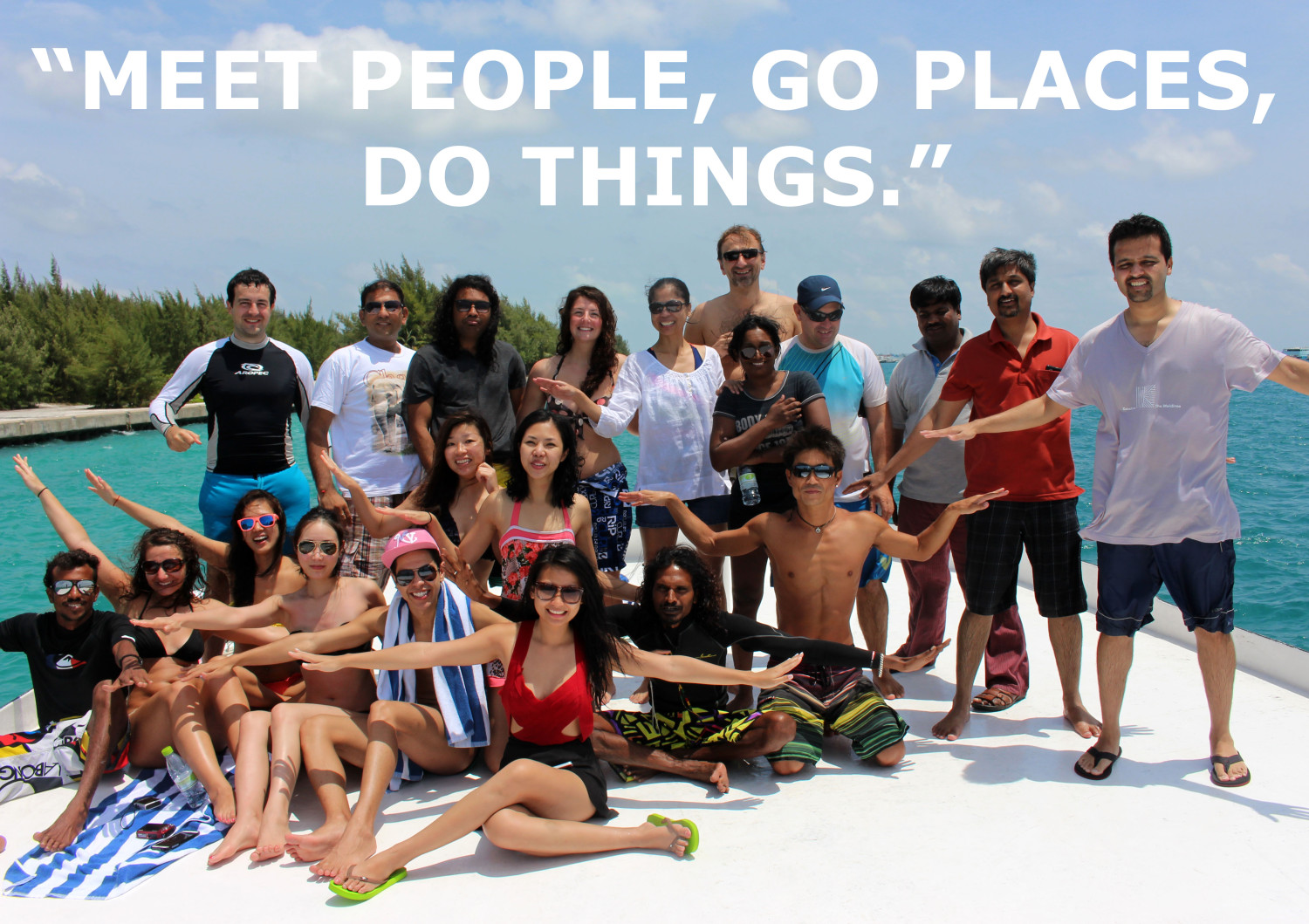 Did you know that The Maldives is 99% ocean? That’s crazy! So a couple weeks ago during the Eid holidays, I decided I couldn’t live in Maldives and not experience 99% of the country. I contacted Dive Club Maldives, a really friendly and professional company, and they -you guessed it- gave me a superb expat discount on the Open Water Diver Course with certification and a cute logbook to keep a record of my dives.
Did you know that The Maldives is 99% ocean? That’s crazy! So a couple weeks ago during the Eid holidays, I decided I couldn’t live in Maldives and not experience 99% of the country. I contacted Dive Club Maldives, a really friendly and professional company, and they -you guessed it- gave me a superb expat discount on the Open Water Diver Course with certification and a cute logbook to keep a record of my dives.
This course took 4 mornings to complete (9am – 1pm) and cost me $350 which is about 5,400 MVR. This includes all the theory knowledge, certification and 8 dives). (If you just want to dive for fun, without certification, work-permit holders can take a single dive for $35 or $55 or 2 dives.) I’m so glad I took the dive, so to speak, and learnt how to dive in Maldives’ truly magnificent underworld. Here’s the breakdown for the course:
On the first day I had the pleasure of meeting Mitte, a really friendly and experienced diving instructor from Japan. He taught me some really important stuff:
-
When we descent (go down), I gotta equalise my air spaces– my lungs (breath in and out- NEVER HOLD YOUR BREATH), my mask (blow gently through the nose if it gets too tight) and my sinuses (pinch my nose and blow gently to release pressure).
-
When we ascend (go up to the surface), we mustn’t go faster than 18m per minute AND when we get to 5m, we must take a safety-stop for 3 minutes. This is to allow time for the nitrogen to leave our bodies and to avoid decompression sickness.
-
Breath slowly and deeply.
-
Don’t dive with a cold/congestion.
-
If you feel the squeeze when going down, go up a little bit and equalise. If you feel it when going up, go down a little bit and equalise. Never continue to dive if you can’t equalise.
-
The BCD and your lungs control your buoyancy (your weight/going up and down). If you are ascending too fast you wanna make sure there’s no air in your BCD and breathe out slowly and deeply. You might need to add another weight to your weight belt for your next dive.
-
Hand signals! No air, low on air, OKAY? OK, there’s a problem, go up, go down, how much pressure do you have? 50 bar, 100 bar, etc.
-
Again, NEVER hold your breath underwater.
Day 1 Dive Skills
-
At 5m I had to fill my mask with water and then tilt my head back, hold the top of the mask with one hand and blow out of my nose to get the water out. This wasn’t as bad as it sounds.
-
I also had to take my mask off completely for 1 long horrible minute. This was as bad as it sounds, but I held my nose shut with one hand and closed my eyes until Mitte tapped my shoulder, so it wasn’t too bad.
-
I had to remove the primary regulator from my mouth (the nozzle supplying me with air) and gently exhale (never holding my breath), and then pop it back in again. You can push a button to push out any water that might have gone inside or you can just give a big blow then continue to breath normally.
Both these skills, removing the mask and the regulator, are important because you never know if someone’s fin is gonna kick you in the face and knock everything out, or if you need to use an alternative air source if you’re running low on air.
-
After that we just had fun and dived, maximum 12m, but I had trouble controlling my buoyancy so I just held onto Mitte’s arm the whole time ha! Visibility was great so I got to see loads of sea-life, but at this point I didn’t know what anything was. Still great though!
Day 2 Dive Skills
Today Mitte was busy with some Korean students, so I got to meet my new instructor from Egypt, called Mohamed. He reaaally knew his theory and I felt really safe around him.
-
Fill my mask at 10m
-
Signal “no air” to my buddy by tapping him on the shoulder, moving my hand from left to right near my neck in a cut-throat fashion, and taking his alternative air source and using it to breathe.
-
Practice ascending and descending on my own (I.e not gripping hold of my instructor). Getting used to the BCD and relaxing my breath.
-
Practising buoyancy when diving. It’s important to try and be neutrally buoyant (your weight is equal to the weight outside) so you neither ascend too fast nor crash and hit the floor/coral (very painful). Once this is sorted you can actually enjoy the dive as you have full control of your position.
-
Setting up the equipment and dismantling it. After a few dives this is super easy. Get the BCD jacket and 1st stage (the thing with the regulators, pressure gauge and BCD), slip the BCD over the tank, screw on the 1st stage, open the tank and check the pressure, check it inflates and deflates and that you can breathe through the regulators. Grab your mask, fins, wet-suit, weight belt and watch and off you go.
Day 3 Dive Skills
-
My instructor had to close my tank completely while we were at about 10m. I had to signal to him “no air” and take his alternative air source.
-
In-case my regulator ever broke and started bubbling all over the place, I had to learn how to breathe in these bubbles for 30 seconds by taking it half way out of my mouth. This let the bubbles out but still let air into my mouth. I didn’t want to do this but I watched my instructor do it 2 or 3 times first and it wasn’t too bad.
-
How to do an emergency ascent. You only do this if you’re out of air and your buddy is so far away you can’t see them or get them to see you. You have to breathe out very slowly, gently saying “ahhhh” and kick your legs a little.
-
How to help your buddy if they experience the dreaded leg cramp whilst at depth. You hold their fin and stretch their leg out, giving it a rub. So far I’ve never had leg cramp but I have had foot cramp almost every time I reach the surface- no idea why!
-
Practising how to hover. Again this is all about your weight and your breathing and trying to stay balanced. Now I’m much better at hovering I’m way more mobile and can spin around a bit or go upside down like an astronaut. Fun!!
-
We talked about what happens if you get too cold underwater. If it’s really cold don’t continue the dive, as you don’t wanna get hypothermia. Give each other a snuggle while you ascend.
-
We dived to 18m!
The good: Today I saw a staggering 7 turtles!! They are absolutely incredible. I stroked a great big one on his shell and neck and he seemed to really like it.
The bad: That practice breathing in the bubbles actually turned into a serious scenario as my regulator actually broke and wouldn’t stop bubbling. I held my instructors arm so tightly while he fiddled around with the regulator and the 1st stage and oh my word it was terrifying, hated every second of that. After a few seconds (felt like forever) he gave me his alternative air source and closed my tank to stop the bubbles. Then we took it real slow and easy as I was a bit shaken up.
It gave me a fright for sure but it wasn’t like the worst thing ever. The rapport between a diver and their instructor is so important! I completely trusted Mohamed so that ensured every dive was super enjoyable (even with the slight bit of trauma!).
Day 4 Dive Skills
-
Somewhere between 10-15m I had to take all of the gear off, obviously keeping the regulator in my mouth in order to breathe. This was fine, I just had to undo the straps and slip my arms out of the BCD jacket. After a few seconds I put it back on and tightened the straps- from the bottom, up.
-
I had to show that I can use the quick-release on the weight and then put the belt back on again.
-
Practice buoyancy in 2 ways: a) sit cross legged and hold each fin. Inhale gently and rise a little, and exhale slowly to go down just as gently. b) Body straight with one leg crossed over the other.
-
Practice using the underwater compass.
-
Hand signals for some kinds of sea life: trigger fish, angel fish, turtle, shark, neopolitan, parrot fish, sweet lips, clown fish, trumpet fish, butterfly fish, eels and lion fish.
After the dives, we returned to Dive Club’s office in Hulhumale where I had one-to-one with Mohamed. He went through some important theory with me and I practised some exam questions. Then I took the real exam, which is multi-choice and nothing to worry about, and that was it! Mohamed then handed me my logbook with everything stamped and signed and sent everything off to PADI. My certification is on its way!
So that’s it for the Open Water Diver Course. I’m so proud of myself for getting it done- and who knows where it’ll lead. The guys are confident I can get to Divemasters before I leave in December. Maybe my next job will be a diving instructor? Let’s see…
If you liked this post and are interested in pursuing the next certification in diving, definitely get in touch with Dive Club Maldives! Diving is definitely the best thing I’ve done here. I’ve been searching for a hobby for ages… I can’t sing, dance or draw, I’m certainly not sporty- but I’ve always loved swimming. Sure diving was terrifying at first but under the stunning blue sea of Maldives I felt completely at peace.
Address: Hulhumalé Industrial Zone, M3-19, 10304, Reethi Gas Magu, Hulhumale, Maldives
Phone: 778-5165
Email: info@diveclubmaldives.com
